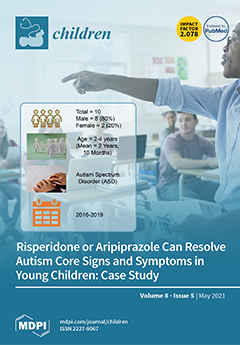Open AccessArticle
Parental Educational Attainment, the Superior Temporal Cortical Surface Area, and Reading Ability among American Children: A Test of Marginalization-Related Diminished Returns
by
Shervin Assari, Shanika Boyce, Mohsen Bazargan, Alvin Thomas, Ryon J. Cobb, Darrell Hudson, Tommy J. Curry, Harvey L. Nicholson, Jr., Adolfo G. Cuevas, Ritesh Mistry, Tabbye M. Chavous, Cleopatra H. Caldwell and Marc A. Zimmerman
Cited by 15 | Viewed by 5517
Abstract
Background: Recent studies have shown that parental educational attainment is associated with a larger superior temporal cortical surface area associated with higher reading ability in children. Simultaneously, the marginalization-related diminished returns (MDRs) framework suggests that, due to structural racism and social stratification, returns
[...] Read more.
Background: Recent studies have shown that parental educational attainment is associated with a larger superior temporal cortical surface area associated with higher reading ability in children. Simultaneously, the marginalization-related diminished returns (MDRs) framework suggests that, due to structural racism and social stratification, returns of parental education are smaller for black and other racial/ethnic minority children compared to their white counterparts. Purpose: This study used a large national sample of 9–10-year-old American children to investigate associations between parental educational attainment, the right and left superior temporal cortical surface area, and reading ability across diverse racial/ethnic groups. Methods: This was a cross-sectional analysis that included 10,817 9–10-year-old children from the Adolescent Brain Cognitive Development (ABCD) study. Parental educational attainment was treated as a five-level categorical variable. Children’s right and left superior temporal cortical surface area and reading ability were continuous variables. Race/ethnicity was the moderator. To adjust for the nested nature of the ABCD data, mixed-effects regression models were used to test the associations between parental education, superior temporal cortical surface area, and reading ability overall and by race/ethnicity. Results: Overall, high parental educational attainment was associated with greater superior temporal cortical surface area and reading ability in children. In the pooled sample, we found statistically significant interactions between race/ethnicity and parental educational attainment on children’s right and left superior temporal cortical surface area, suggesting that high parental educational attainment has a smaller boosting effect on children’s superior temporal cortical surface area for black than white children. We also found a significant interaction between race and the left superior temporal surface area on reading ability, indicating weaker associations for Alaskan Natives, Native Hawaiians, and Pacific Islanders (AIAN/NHPI) than white children. We also found interactions between race and parental educational attainment on reading ability, indicating more potent effects for black children than white children. Conclusion: While parental educational attainment may improve children’s superior temporal cortical surface area, promoting reading ability, this effect may be unequal across racial/ethnic groups. To minimize the racial/ethnic gap in children’s brain development and school achievement, we need to address societal barriers that diminish parental educational attainment’s marginal returns for middle-class minority families. Social and public policies need to go beyond equal access and address structural and societal barriers that hinder middle-class families of color and their children. Future research should test how racism, social stratification, segregation, and discrimination, which shape the daily lives of non-white individuals, take a toll on children’s brains and academic development.
Full article
►▼
Show Figures






